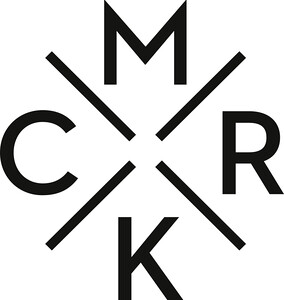Opening June 23, 2017
CMRK is a network of four independent institutions for contemporary art based in Graz: Camera Austria, Künstlerhaus, Halle für Kunst & Medien (KM– Graz), < rotor >, and Grazer Kunstverein.
Un-Curating the Archive
Based on a Reference Collection by Nicole Six and Paul Petritsch
Part I: 1974–1989
Camera Austria
June 24–August 13, 2017
www.camera-austria.at
Abstract Hungary
Künstlerhaus
Halle für Kunst & Medien (KM– Graz)
June 24–September 7, 2017
www.km-k.at
Productive Wild Archive: < rotor > 2007–2016
< rotor >
June 24–September 9, 2017
www.rotor.mur.at
The Necessity of Art: Summer Programme
Grazer Kunstverein
June 24–September 9, 2017
www.grazerkunstverein.org
In recent years, a series of artistic positions were present—both in the exhibitions of Camera Austria and in the magazine Camera Austria International—which deal with questions related to the archive. So on the one hand, the point is to imagine archives that do not exist but would be necessary, and on the other, to add something to archives that is lacking, that is repressed or excluded. Our surveying of the Camera Austria archive attempts to bring together these different explorative questions. Is it an archive that could add something not yet present to the established narratives about the relevance of contemporary art photography? What other history might it tell? How could it be brought into association with the idea of the “anti-archive” (Peter Friedl)? And how about the uncomfortable question of what power this archive may hold? The artists Nicole Six and Paul Petritsch have developed a publication concept in which all archival material is presented in the exhibition as a reference collection. The archive is reconquering the exhibition space, yet without becoming a veritable exhibition object. It is leaving the file cabinet in order to expose itself to the question of the topicality of its “truth production.”
With Abstract Hungary, the Künstlerhaus, Halle für Kunst & Medien (KM– Graz) is presenting 24 Hungarian artists of different generations whose artistic practice is devoted to current variations of abstract art. The term “abstract” plays an overriding role in the show, in the sense that it represents an open-minded, productive attitude that transcends the ostensible practice of formalism. The term also encompasses an art-historical, discursive dimension that sheds some critical light on the factor of time, while also regarding the participating artists as a connective element. In a period of ambivalent political, social, economic, and technological spheres, abstract art interprets things beyond the local. This approach plays with the concept of an independent international language, underscoring its strength as a binding element that surpasses language barriers. The exhibition takes today’s complicated and confusing local and international environments as its starting point in order to contrast via proposals and drafts—“abstracts” with future potential—updated and living traditions with a stance that overcomes the classic idea of the nation.
With Imre Bak, Sári Ember, János Fajó, Andreas Fogarasi, Péter Tamás Halász, György Jovánovics, Tamás Kaszás, Zsófia Keresztes, Ilona Keserü Ilona, Adrian Kiss, Ádám Kokesch, Tamás Komoróczky, László Lakner, Little Warsaw, Mira Dalma Makai, Dóra Maurer, István Nádler, Márton Nemes, Péter Puklus, Klára Rudas, Gergő Szinyova, Zsolt Tibor, Ádám Ulbert, Júlia Vécsei
The exhibition titled Productive Wild Archive will draw on materials from 2007 to 2016 collected at < rotor >. The title is therefore programmatic for a phase of sorting, structuring, and reflecting: the “wild” archive, in the sense of the subjectivity of collecting, is to be made available for productive use through examination on different levels.
In the exhibition, a large number of treasures from the inventory will be displayed and can thus be experienced. Also, the exhibits presented will be continuously supplemented in the sense of continued real-time archiving. This is to a lesser extent about the complete representation of past events, and more about tracing particularly interesting materials from the archive with the distance of the years gone by. It is a search for traces that works out thematic cross-connections and follows up content which < rotor > will probably deal with in years to come. The < rotor > team will guide visitors through the exhibition of the archived materials, and the stories around the “Archived Exhibit of the Day” will be a special highlight.
Throughout summer, the Grazer Kunstverein is dedicated to exploring ideas around the transformative potential of art as inspired by our relationship to nature—by presenting three very different projects dealing with the influence of nature in ways that are physical, performative, poetic, and metaphorical.
Ruth E. Lyons is developing WWWW, a new line of alternative workwear designed specifically for the female body working across industrial landscapes. Fiston Mwanza Mujila performs extracts from his powerful book of poetry Le Fleuve dans le Ventre / Der Fluß im Bauch (The River in the Belly), which takes on themes of solitude and exile, shaped and inspired by the coursing waters of the Congo River. Edward Clydesdale Thomson introduces an abstract sculptural garden that tends to ideas around care and commitment, and which will eventually grow into a real garden at the Grazer Kunstverein.
Alongside works by Lyons, Mwanza Mujila, and Clydesdale Thomson, traces from the spring season will remain in the building, adding to the chorus of voices coming together at the Grazer Kunstverein under our guiding leitmotif “The Necessity of Art.”


